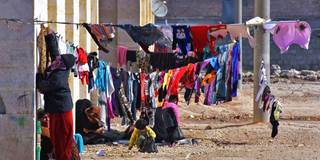Syria’s Balance of Terror
Given the weaknesses, divisions, and fatigue of the various forces at work in Syria – both the regime and the opposition – regional powers may now have a better chance of pushing for a sustainable ceasefire. But regional powers have their own interests, which seem to be taking precedence over ending the fighting.

LONDON – As the civil war in Syria nears the six-year mark, the mounting death toll and constantly shifting military landscape is making a mockery of the diplomatic track. With yet another round of talks on the horizon – new United Nations-led discussions are scheduled to begin this week in Geneva – it’s worth asking why the conflict has been so intractable.